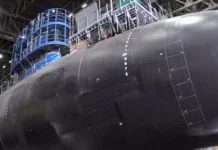The first oyster farm in Rhode Island was started in 1798, but until now aquaculture has been practiced here on a small scale. But a new report shows the industry is starting to yield more substantial revenue, surpassing $1 million for the first time last year.
The farmgate value of Rhode Island aquaculture products – the value of the product paid directly to the farmer – rose by a dramatic 81 percent in 2006, to $1,348,525, the R.I. Coastal Resources Management Council said last month. In 2004, the total value was $572,994.
In addition, the CRMC said, three new farms were added, for a total of 28, and the total acreage increased to 99. Most notably, the agency said, the value generated per acre grew to “an amazing” $13,621, from $8,757 in 2005.
“This year’s report was significant,” said David Alves, the aquaculture coordinator for CRMC. “We’ve been seeing pretty good increases year to year, but one thing that was a surprise was the value per acre. That’s a big jump that shows that investment into the farms is paying off.”
He added: “I wish all the industries in the state could do increases like this.”
Aquaculture in Rhode Island has involved strictly shellfish for the last seven years, according to the report. In 2006, American oysters accounted for 97 percent of the state’s aquaculture harvest, while hard clams accounted for the remaining 3 percent.
The amount of oysters harvested increased 54 percent, the CRMC said, while clam production grew 158 percent.
“The market has been really crazy,” Alves said. “They can sell everything they can and then some. I don’t know if the economy is doing well, but apparently people are eating shellfish.”
In a news release about the aquaculture report, CRMC Chairman Michael M. Tikoian attributed the jump to the state’s regulatory environment and to officials’ work with the farmers.
“We credit our regulations and policies, which we are constantly looking to improve, as well as our good working relationship with industry members, for this growth,” he said.
The growers themselves have been making “significant” investments, the report notes. In 2006, they collectively invested $886,288 in their farms, the CRMC said, up from $852,500 invested in 2005 and more than triple the $271,000 invested in 2003.
And because so many farms are relatively new, Alves said, part of the reason for last year’s jump is that the investments are starting to pay off.
“Over the years, we’ve had steady increase in the number of farms, but it takes at least two years to get a crop out, so there’s a two-year lag with the new growers,” he said. “But the farms are also getting more efficient.”
David Bengtson, chairman of the Department of Fisheries, Animal and Veterinary Services at the University of Rhode Island, offered a similar assessment.
“I’m pleased to see the value is going up quite a bit,” he said. “But we’ve known for a few years now that it was going to jump out.”
Even mature businesses have seen strong growth. Bob Rheault, owner of Moonstone Oysters, a 12-acre farm started in 1986 in Point Judith Pond in Narragansett, said he has seen “a gradual, steady increase of 25 to 30 percent a year going back 10 years.”
But Rheault also warned against overly high expectations for 2007.
Last year “was a great year,” he said, “but I think some of us oversold the crop last year and might see a slip in numbers this year. It’s not like you can walk to the shelf and pull off a widget and say, we have this many left.”
There are also questions about aquaculture’s long-term growth potential in Rhode Island.
“We have natural limitations such as conflicting uses in the bay and the wild harvest,” Alves said. “There are a lot of people who use the water in Rhode Island, so aquaculture has to fit in with everyone else.”
To try to balance those conflicting interests, a CRMC working group on aquaculture regulations is trying to develop a long-term plan for the industry, Bengtson said, focusing primarily on concerns raised by the R.I. Marine Fisheries Council and the R.I. Department of Environmental Management.
“People who are out there using the waters are getting concerned that aquaculture is growing quickly and that there is not a plan for its long-term development,” he said. “I think acreage will go up a little – probably not a lot. But I also think that because other people in the state have addressed concerns about aquaculture, the CRMC may slow down on the number of leases that are allowed.”
Rheault said that without a change in the regulatory process, Rhode Island could probably continue to see “pretty strong growth” in aquaculture. But proposed caps on the number of farms or the total acreage that can be farmed could stop that trend.
“We would be the first state in the country to regulate in that manner,” Rheault said. “It’s not common for people to tap an industry before it gets established.”
No posts to display
Sign in
Welcome! Log into your account
Forgot your password? Get help
Privacy Policy
Password recovery
Recover your password
A password will be e-mailed to you.













